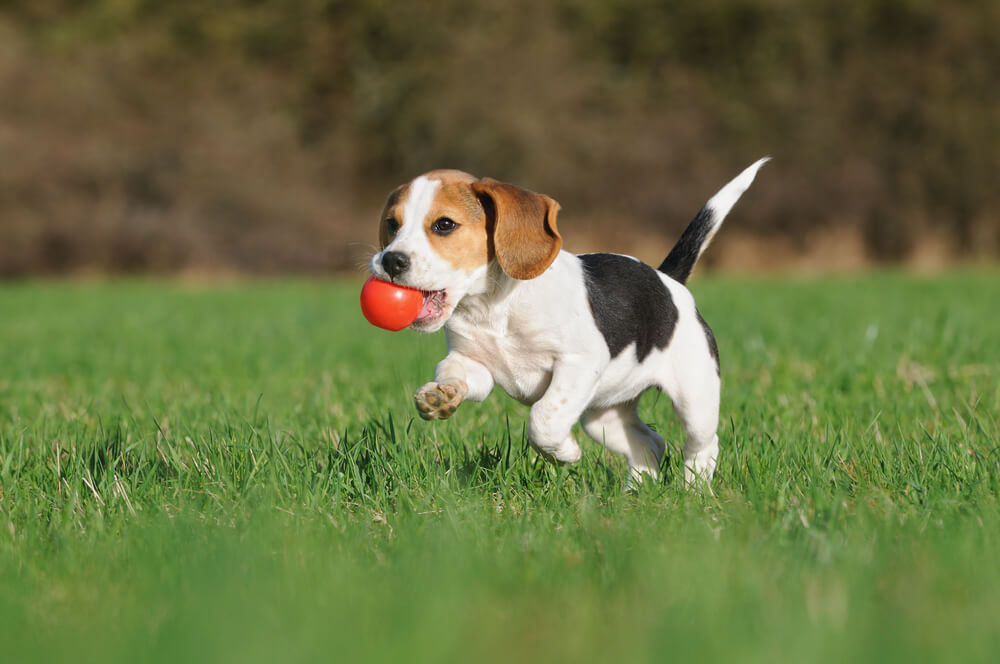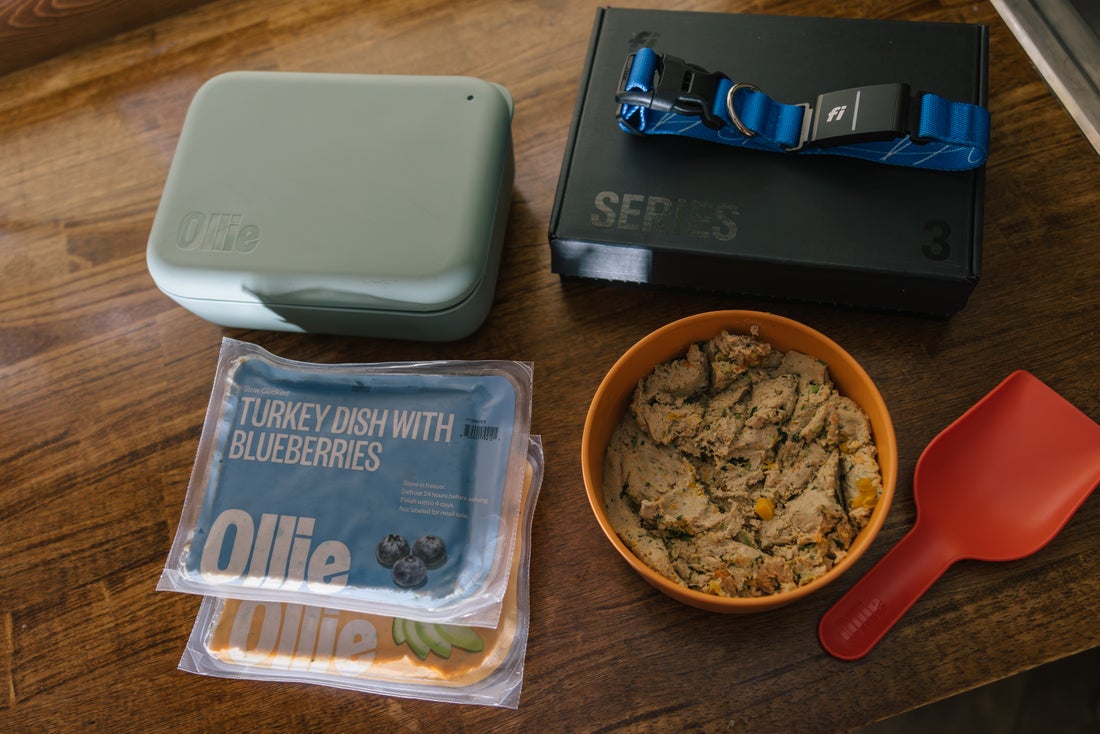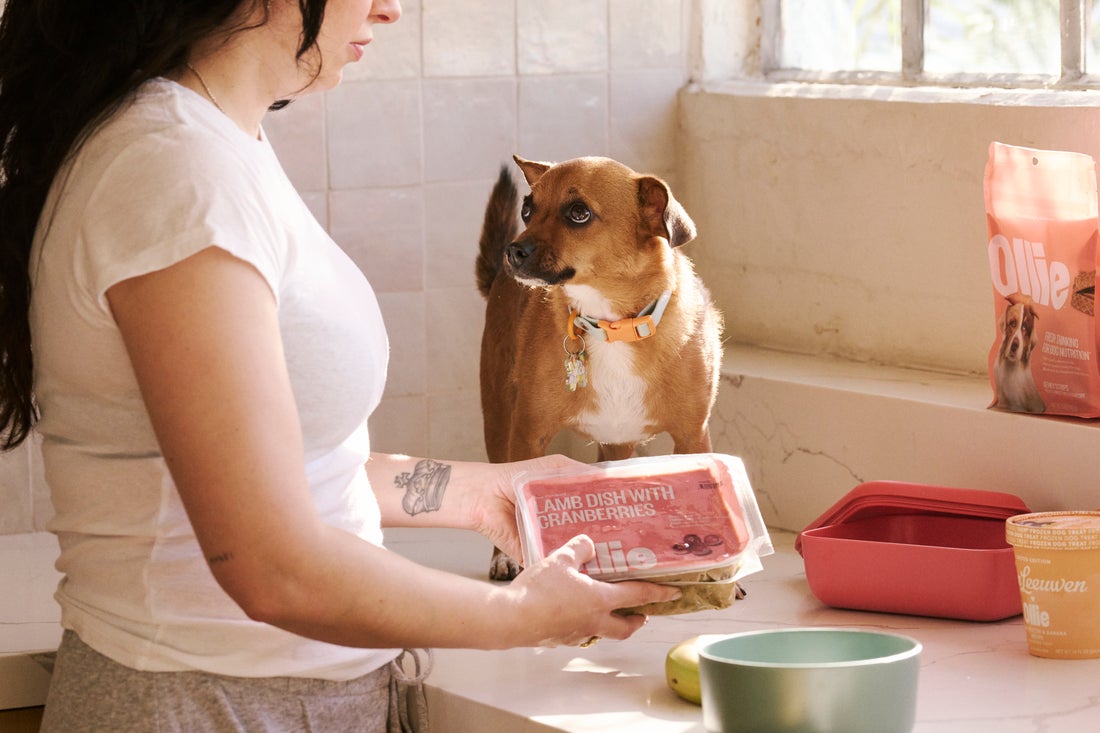Hey Ollie blog readers! We’re offering you an exclusive 60% OFF your starter box! Try now!
Your dog keeps shaking their head like they’re trying to toss off a pesky bug. Maybe they’re scratching at their ears nonstop or you’ve noticed a weird smell when they cuddle up next to you. These signs might seem small at first, but they could point to something that’s surprisingly common—and incredibly uncomfortable for your pup: a dog ear yeast infection.
Yeast infections in a dog’s ears can sneak up quickly, especially if your dog has floppy ears, allergies, or loves a good swim. While they aren’t contagious, they can cause major discomfort and, if left untreated, may lead to more serious ear problems.
The good news? Once you understand the causes and symptoms, you can get your dog the relief they need—and help prevent it from coming back.
What Is a Yeast Infection in a Dog’s Ear?
A yeast infection in a dog’s ear happens when the naturally occurring yeast on your dog’s skin grows out of control. The main culprit is usually a yeast species called Malassezia pachydermatis. It lives on healthy skin without causing issues, but under the right conditions—like extra moisture, warmth, or inflammation—it can multiply fast.
The ear canal provides the perfect setting for yeast to thrive: dark, warm, and often moist. That’s why infections tend to develop in ears that stay damp from swimming, bathing, or humid weather. Dogs with floppy ears or lots of ear hair are especially at risk since their ears trap moisture more easily.
When yeast grows too much, it triggers irritation, itchiness, and inflammation. Your dog may start scratching, shaking their head, or showing signs of discomfort. In more advanced cases, you might notice discharge or a strong odor coming from the ears.
Up next, we’ll cover exactly what symptoms to look for so you can catch a yeast infection early—before it gets worse.
Dog Ear Yeast Infection Symptoms
Yeast infections in a dog’s ears can go from mild to miserable pretty quickly. Knowing what to look for early on can help you get ahead of the problem—and save your dog a lot of discomfort.
Here are some of the most common dog ear yeast infection symptoms:
- Head shaking—especially frequent or vigorous shaking
- Scratching or pawing at the ears
- Redness or swelling inside the ear canal
- Brown, yellow, or waxy discharge coming from the ear
- A musty, sweet, or sour smell (some pet parents describe it like corn chips)
- Crusty or scaly skin around the ears
- Sensitivity to touch—your dog may pull away or yelp when you try to check their ears
In mild cases, you might only notice an odor or some scratching. But left untreated, the infection can worsen and even affect your dog’s balance or hearing. If your dog seems off-balance, is tilting their head constantly, or shows signs of pain, it’s time to get your vet involved right away.
Catching these signs early means your dog can get relief faster—and it reduces the chance of long-term ear issues down the road.
Dog Ear Yeast Infection Causes
So what causes yeast to grow out of control in the first place? It’s not always one thing—it’s usually a mix of internal and external factors. Let’s break down the most common dog ear yeast infection causes so you know what might be behind the problem.
Allergies (Environmental or Food)
Allergies are one of the top triggers. Whether it’s pollen, dust, mold, or something in your dog’s food, allergic reactions cause inflammation—and that inflammation can lead to more wax, moisture, and yeast in the ears.
Dogs with seasonal or year-round allergies often have recurring ear infections, and managing those allergies (starting with food) is key to long-term relief.
Ear Anatomy (Floppy or Hairy Ears)
Some breeds are just more prone to ear yeast infections. Dogs with floppy ears like Basset Hounds, Cocker Spaniels, and Labradors have less air circulation inside their ears, which creates a warm, moist environment that yeast loves.
Poodles and other breeds with lots of hair inside the ear canal can also have trouble keeping moisture out.
Excess Moisture
Whether it’s from swimming, bathing, or even just humid weather, leftover moisture in the ear canal creates the perfect breeding ground for yeast. If your dog doesn’t dry off completely—or if water gets trapped in a deep ear canal—yeast can start multiplying fast.
Immune System Imbalance or Antibiotic Use
A healthy immune system helps keep yeast in check. But if your dog has a weakened immune system or has been on antibiotics recently, the balance between good bacteria and yeast can shift. That allows yeast to overgrow and cause infection.
Keeping your dog’s immune system strong—with good nutrition, stress management, and regular checkups—can help prevent this.
Dog Ear Yeast Infection Treatment Options
If your dog is dealing with a yeast infection in their ear, treatment should start with a visit to the vet. While mild cases can sometimes be managed at home, it’s important to confirm the cause before applying anything—especially when it involves the ears.
Here’s what dog ear yeast infection treatment typically looks like:
Veterinary Diagnosis and Medications
Your vet will likely examine your dog’s ears and take a swab to confirm it’s yeast (not bacteria or mites). From there, they may prescribe:
- Antifungal ear drops or ointments to directly fight the infection
- Medicated ear cleaners to flush out wax, debris, and excess yeast
- Oral antifungal medication, in more severe or recurring cases
- Anti-inflammatory medication if your dog is in pain or showing signs of swelling
The key is following your vet’s instructions exactly—finish the full course of treatment even if the symptoms seem to go away early. Stopping too soon can allow the yeast to come back stronger.
Ear Cleaning and Home Care
Keeping your dog’s ears clean and dry is a big part of the healing process. Use only vet-recommended cleaners, and never stick cotton swabs into the ear canal—they can push debris in deeper and cause damage.
Tips for safe home care:
- Clean gently around the outer ear
- Dry thoroughly after baths or swimming
- Avoid over-cleaning, which can cause irritation
Nutrition and Immune Support
Food plays a powerful role in how your dog’s body handles inflammation and infections. A diet full of fresh, whole ingredients can help support the immune system and reduce the underlying inflammation that feeds yeast.
Ollie fresh dog food is made without common allergens or fillers, using simple, nutrient-dense ingredients. Combined with our Skin & Coat supplement, it’s a great way to support dogs prone to yeast infections from the inside out.
Preventing Future Ear Yeast Infections in Dogs
Once you’ve cleared up a yeast infection, the next step is making sure it doesn’t come back. Prevention isn’t complicated, but it does require consistency—especially for dogs with floppy ears, allergies, or a history of ear issues.
Here’s how to help prevent yeast infections in your dog’s ears:
- Dry ears thoroughly after every swim or bath
- Clean ears regularly, using a vet-recommended ear cleaner
- Trim excess hair around the ears to improve airflow
- Manage allergies, especially food sensitivities or seasonal triggers
- Avoid overuse of antibiotics or steroids, unless prescribed by your vet
- Feed a clean, anti-inflammatory diet that supports skin and immune health
If your dog’s had multiple ear infections, ask your vet about regular maintenance cleaning or allergy testing. And keep an eye out for early signs—catching an issue before it turns into a full-blown infection can save your pup a lot of discomfort.
How Nutrition Supports Healthy Ears
You might not think about food when your dog has an ear infection—but what they eat can make a big difference. A high-quality diet supports a strong immune system, reduces inflammation, and helps the body maintain a healthy balance of bacteria and yeast.
Dogs with chronic ear yeast infections often have underlying food sensitivities. Common triggers like chicken, wheat, soy, and artificial additives can create inflammation that makes ears more prone to infections. That’s why switching to a clean, limited-ingredient diet can help prevent future flare-ups.
At Ollie, we take nutrition seriously. Our fresh food recipes are made with real, gently cooked ingredients you can recognize—no fillers, no by-products, and nothing unnecessary. Each meal is designed to be easy to digest and support your dog’s whole-body health, including skin and ear wellness.
For dogs that need extra support, our Skin & Coat supplement adds omega-3 fatty acids and other key nutrients that promote a strong skin barrier and calm irritation from the inside out.
Feeding your dog a diet that supports their immune system and reduces allergy triggers is one of the most effective ways to keep their ears happy and healthy long term.
Ears That Feel as Good as They Look
Yeast infections in your dog’s ears can be frustrating—but they don’t have to be a constant battle. The key is knowing what to look for, treating infections early, and making smart changes that support your dog’s health over time.
From allergies and moisture to immune imbalances and diet, many factors play a role in recurring ear issues. The good news is that with the right treatment, routine care, and a clean, supportive diet, most dogs can enjoy healthy, itch-free ears for the long haul.
Think your dog’s food could be contributing to their ear issues? Take our short quiz to build a custom meal plan with clean, whole ingredients that support your pup’s skin and immune health.
Say goodbye to the itch—and hello to fresh, happy ears.
Tagged As:

The nutrition your dog needs,
the food they want.

Enjoying our articles? Subscribe our Newsletters and get new articles directly to your inbox
You might also like
18 September 2025
5 MINS READ
Can I Rotate Fresh Dog Food Flavors?
Yes, it’s safe to rotate fresh dog food flavors, and many dogs actually benefit from the variety. At Ollie, we offer multiple fresh recipes, like Beef, Chicken, Turkey, Lamb, and Pork so you can…
by Ollie Pets
18 September 2025
5 MINS READ
Is Fresh Dog Food Safe During Power Outages?
Fresh dog food is only safe during a power outage if it has stayed cold, specifically, below 40°F. Once the temperature rises above that point, bacteria can start to grow, and the food may no lon…
by Ollie Pets
18 September 2025
5 MINS READ
How Do I Store Fresh Dog Food While Traveling?
If you’re bringing fresh dog food on the road, keeping it cold is key. The best way to store it is in a cooler with ice packs or a travel freezer. At Ollie, our vacuum-sealed fresh food stays good…
by Ollie Pets







